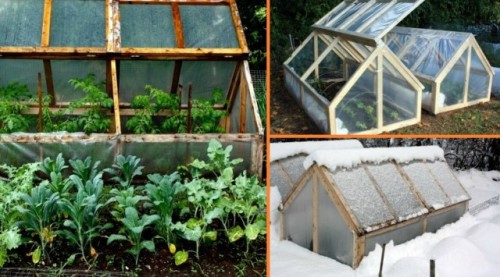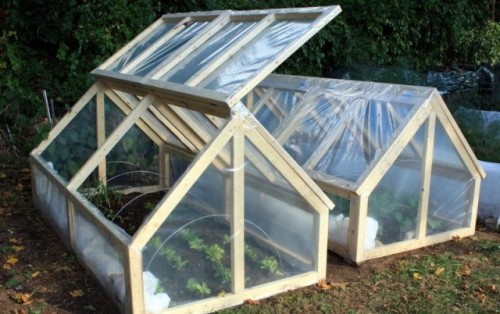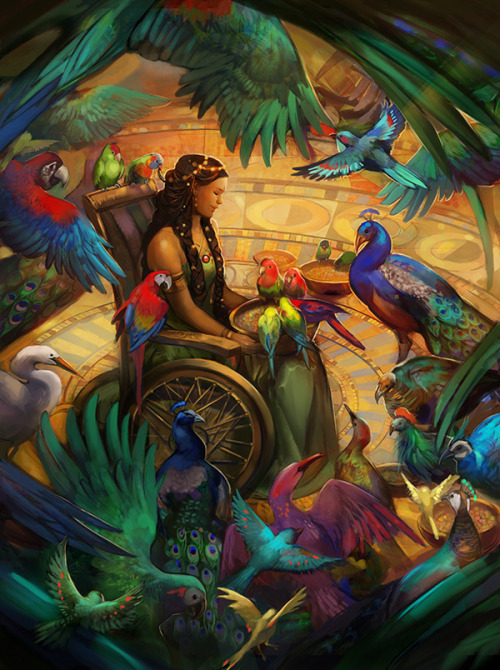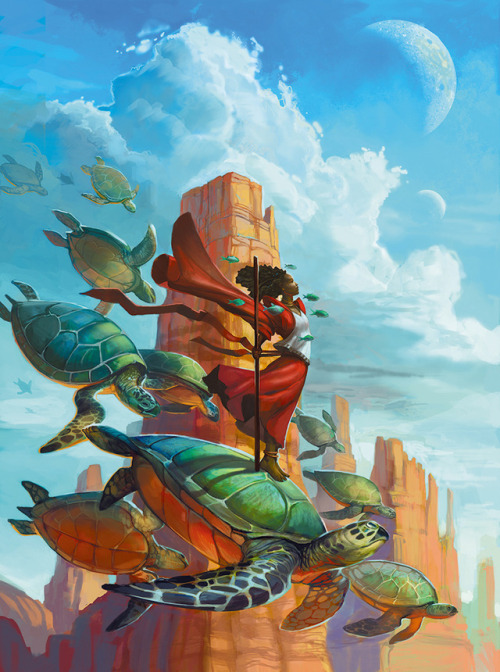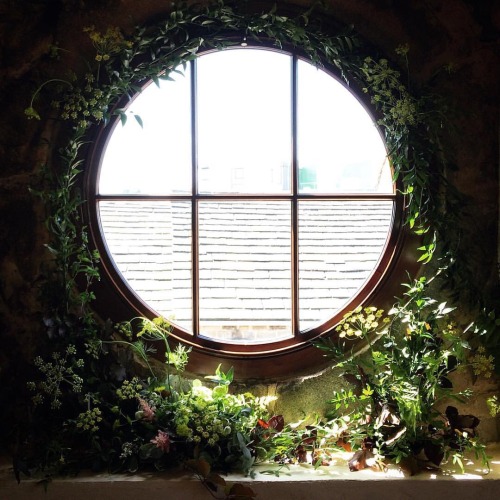Your gateway to endless inspiration
Solarpunk - Blog Posts
Hey y’all! I wanted your opinion on something. My laptop for the past five years has died, it’s dead and gone. And I was wondering would it be best for me to just get some cheapo $200 computer and hope for the best or save up for like a $400 $500 computer that’ll last me for longer and treat me better? By the way I am like a first year college student who has access to computers on campus. And I already went to a computer technician who is backing it for like $50, so my files are not lost.
This is one of the oldest conundrums of personal finance: to spend a small amount of money on a bandaid solution NOW, or save up for a long-term solution later. We wrote about the dilemma here:
It’s More Expensive to Be Poor Than to Be Rich
Personally, if you can get by using the computers at school, then I would save up another few hundred dollars to buy the higher quality computer that will last longer. It’ll be cheaper in the long term, and you’ll rest easy knowing that you won’t have to deal with another computer combustion any time soon. Good luck!

How to build a solar greenhouse heater using old beer cans

Repair Cafés
Repair Cafés are free meeting places and they’re all about repairing things (together). In the place where a Repair Café is located, you’ll find tools and materials to help you make any repairs you need. On clothes, furniture, electrical appliances, bicycles, crockery, appliances, toys, et cetera. You’ll also find expert volunteers, with repair skills in all kinds of fields.
Visitors bring their broken items from home. Together with the specialists they start making their repairs in the Repair Café. It’s an ongoing learning process. If you have nothing to repair, you can enjoy a cup of tea or coffee. Or you can lend a hand with someone else’s repair job. You can also get inspired at the reading table – by leafing through books on repairs and DIY.
There are over 1.500 Repair Cafés worldwide. Visit one in your area or start one yourself!
Read more…
when the capitalists die out either thru global warming or revolution will we be able to start homegrown internet

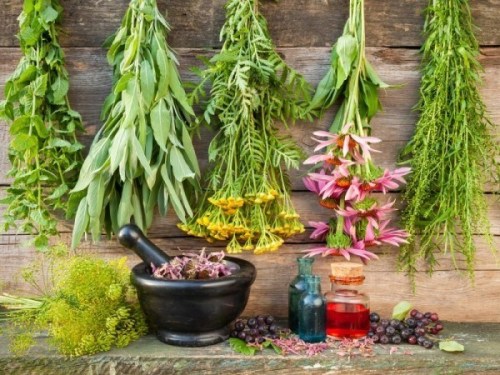
A Practical Guide to Herbology
Lesson One: Medicinal Teas
When I was first starting out with herbology, I was living in a small village in Croatia with a total population of less than 100 people. We depended on homemade teas, salves and medicines to heal us since the nearest hospital was two hours away. We treated ourselves with the power of herbs, gifted to us by the Earth.
These days, we can purchase all the tools we need to grow both common and exotic plants. Dried herbs are also another good option, especially for those that cannot grow their own. And with these tools, we can craft our own medicines.
For the first lesson, I’m going to focus on something simple: the art of crafting medicinal tea.

Creating Tea Blends
When starting out with creating medicinal teas, it’s important to understand how each ingredient interacts with our bodies. Be sure that you’re not allergic to any of your herbs and that they won’t interact poorly with any prescribed medications that you’re on. For example, those who are diabetic should not take angelica root; folks who are allergic to ragweed should avoid chamomile.
Here’s a list of common herbs and their functions for the purposes of crafting medicinal teas:
Angelica Root: Soothes colds and flu, reduces phlegm and fever. (Do not use if you are diabetic)
Basil: Eases headaches, indigestion, muscle spasms, insomnia; reduces stress and tension
Blackberry Leaves or Roots: Reduces diarrhea
Catnip: Soothes teething pain, colic, diarrhea, indigestion, anxiety, insomnia. (May cause drowsiness. Avoid if on Lithium or sedatives)
Calendula (marigold): Reduces fevers, soothes indigestion, gastrointestinal cramps, flu; antiseptic. (May cause drowsiness. Avoid if on sedatives)
Cayenne Pepper: Soothes coughs, colds, arthritis (topical), nerve pain, fever, flu; expectorant. (Avoid taking with medications that contain Theophylline).
Chamomile: Reduces insomnia, anxiety, stress, fever, indigestion; aids with sleep and pain relief. (May decrease effectiveness of birth control pills and some cancer medications, may increase the effects of warfarin; avoid if you are taking medications for your liver)
Cinnamon Bark: Soothes sore throats and coughs; anti-inflammatory (Avoid taking with diabetes medications)
Dandelion Root: Detoxifying, aids digestion, relieves constipation, laxative. (Avoid if on antibiotics, lithium or water pills)
Dandelion Leaf: Mild diuretic, potassium-rich (Avoid if on medication for liver)
Elderberries: Wards off colds and flu
Ginger: Eases morning sickness, nausea, colic, indigestion, diarrhea, fever, sore throats. (Avoid taking with medications that slow blood clotting)
Ginkgo: Relieves anxiety, vertigo, tinnitus; improves circulation, helps concentration; helps PMS. (Avoid taking with ibuprofen or with medications that slow blood clotting; numerous medications have interactions with ginkgo so speak to your specialist before use)
Ginseng: Aphrodisiac, mild stimulant, boosts immune system. (Do not take with medications that slow blood clotting, and avoid taking with diabetes medications or with MAO inhibitors)
Goldenrod: Relieves gout and cramps
Lavender: Reduces anxiety, headaches, tension, stress, indigestion, IBS; antibacterial; antiseptic; disinfectant (May cause drowsiness; avoid if on sedatives)
Lemon balm: Relieves anxiety, cold sores, colic, insomnia, restlessness, indigestion; boosts memory (May cause drowsiness, avoid taking with sedatives)
Nettle: Reduces hay fever and arthritis; diuretic. (Avoid taking with diabetes medications, medications for high BP, sedatives, medications that slow blood clotting, and lithium)
Peppermint: Relieves nausea, anxiety, indigestion, IBS, colic, diarrhea, fever, coughs, colds; anesthetic (Avoid if you have acid-reflux disease; avoid taking with cyclosporine; avoid if on liver medications)
Pine Needles: Expectorant; antiseptic; relieves coughs, colds, fever and congestion
Rosemary: Improves focus, memory, concentration, BP, circulation; antiseptic; antidepressant; eases indigestion
Thyme: Antibacterial, antiseptic, eases coughs and colds, expectorant (Do not take with medications that slow blood clotting)

Recipes
For those starting out, here are a few recipes for common ailments. As you start making your own teas, you’ll learn which blends of herbs work best for your body. Keep track of which ingredients and combinations are successful - with each steep, you get closer and closer to crafting your perfect personalized medicine cabinet.
Anxiety Relief - ½ tsp chamomile - ½ tsp lemon balm Cold Relief - ½ tsp elderberry flower - ½ tsp thyme Mood Booster - ½ tsp lavender - ½ tsp catnip - ½ tsp rosemary Cramp Relief - ½ tsp basil - ½ tsp calendula (marigold) - ½ tsp goldenrod Indigestion Relief - ½ tsp ginger - ½ tsp lemon balm - ½ tsp peppermint Expectorant - ½ tsp pine needles - ½ tsp nettle leaf - ½ tsp angelica root Insomnia - ½ tsp chamomile - ½ tsp catnip - ½ tsp lavender Sore Throat Relief - ½ tsp cinnamon (or half a stick) - ½ tsp ginger - 1 tbsp honey Fever Break - ¼ tsp cayenne pepper - ½ tsp angelica root Flu Relief - ½ tsp calendula (marigold) - ½ tsp lemon balm
—————————————————————————–
Photographs are under the Creative Commons License. Content is from my grimoire and is embedded with information from a variety of sources over the years.
Updated 7 March 2018 with relevant warnings and to be consistent with other posts in this series.
Warnings: All plant material should be sourced appropriately and responsibly for your own safety and well-being. Be certain that you are purchasing food-grade ingredients from a reliable retailer or supplier. Along these lines, not all dried herbs are meant for consumption so please be on the lookout for “external use only” labels - you do not want those products for this.
Do your own research regarding medicinal plants and usage, especially if you are sensitive or have allergies of any kind. If you are on medication(s), consult a doctor before use.
Finally, medicinal teas are a health supplement and not a substitution for professional medical and psychiatric aid. If you are experiencing any prolonged health and/or mental health issues, SEE A DOCTOR.
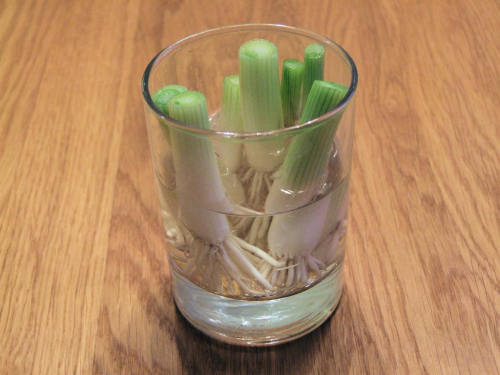
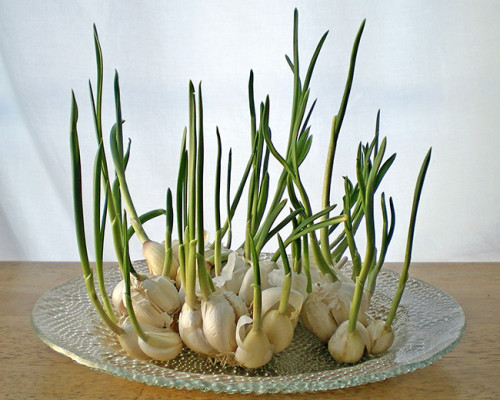
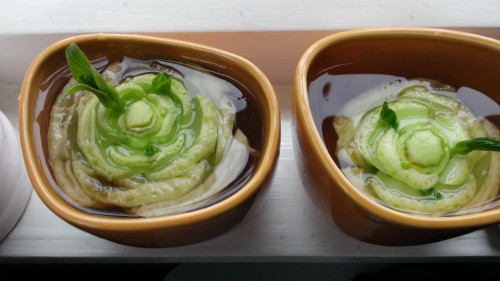
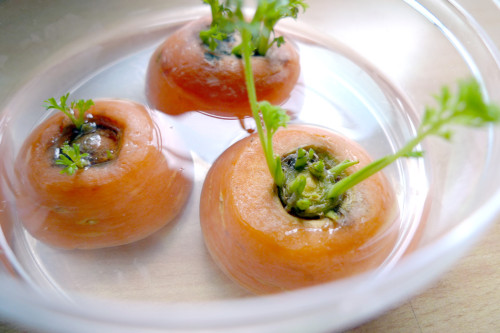
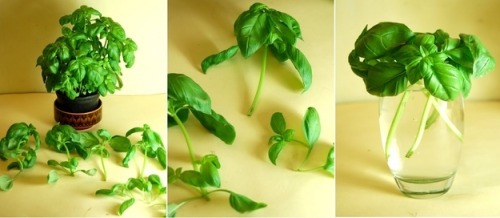

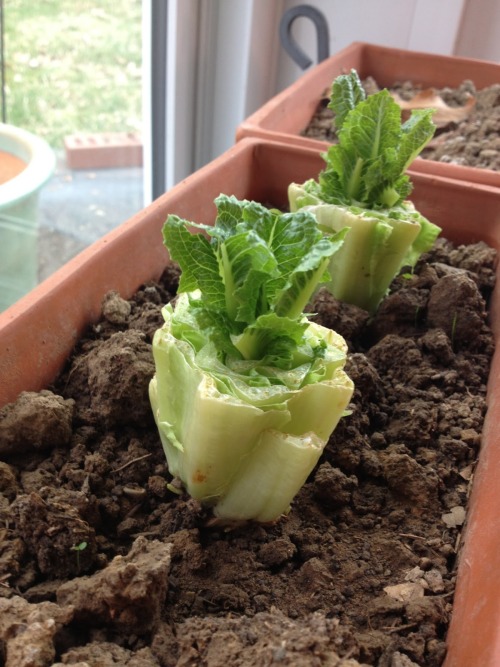
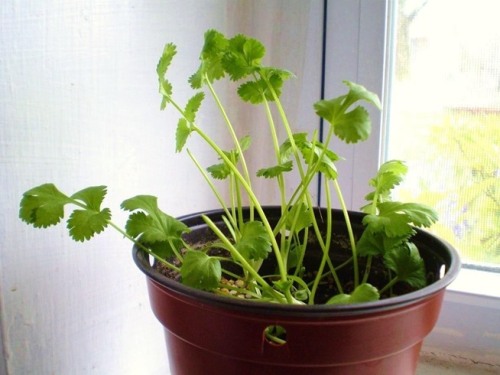
8 vegetables that you can regrow again and again.
Scallions
You can regrow scallions by leaving an inch attached to the roots and place them in a small glass with a little water in a well-lit room.
Garlic
When garlic begins to sprout, you can put them in a glass with a little water and grow garlic sprouts. The sprouts have a mild flavor than garlic and can be added to salads, pasta and other dishes.
Bok Choy
Bok choy can be regrown by placing the root end in water in a well-lit area. In 1-2 weeks , you can transplant it to a pot with soil and grow a full new head.
Carrots
Put carrot tops in a dish with a little water. Set the dish in a well-lit room or a window sill. You’ll have carrot tops to use in salads.
Basil
Put clippings from basil with 3 to 4-inch stems in a glass of water and place it in direct sunlight. When the roots are about 2 inches long, plant them in pots to and in time it will grow a full basil plant.
Celery
Cut off the base of the celery and place it in a saucer or shallow bowl of warm water in the sun. Leaves will begin to thicken and grow in the middle of the base, then transfer the celery to soil.
Romaine Lettuce
Put romaine lettuce stumps in a ½ inch of water. Re-water to keep water level at ½ inch. After a few days, roots and new leaves will appear and you can transplant it into soil.
Cilantro
The stems of cilantro will grown when placed in a glass of water. Once the roots are long enough, plant them in a pot in a well-lit room. You will have a full plant in a few months.
Can I watch a great film knowing the actresses in it were terrorized and mistreated the entire time? Can I watch a football game knowing that the players are getting brain injuries right before my eyes? Can I listen to my favorite albums anymore knowing that the singers were all beating their wives in between studio sessions? Can I eat at the new fancy taco place knowing when the building that used to be there got bulldozed eight families got kicked out of their homes so they could be replaced with condos and a chain restaurant? Can I wear the affordable clothes I bought downtown that were probably assembled in a sweatshop with child labor? Can I eat quinoa? Can I eat this burger? Can I drink this bottled water? Can I buy a car and drive to work because I’m sick of taking an hour each way on the subway? Whose bones do I stand on? Whose bones am I standing on right now?



Printed Solar Bio-Batteries
Led by biotechnologist Marin Sawa, a group of researchers at Imperial College London have devised a way to print solar cells onto paper. They use an inkjet printer to place a conductive layer of carbon nanotubes and a layer of living cyanobacteria to create devices which can capture and store solar energy.
In their proof-of-concept experiment, the cyanobacteria survived the printing process and were able to produce energy from photosynthesis. The trial panel was palm sized and gave enough energy to power a small LED light. Even better, being little more than paper, carbon, and bacteria, the bio-cells are fully biodegradable.
The work is part of an emerging field of science called microbial biophotovoltaics (presumably related to the biovoltaics I’ve mentioned here before) which uses algae and cyanobacteria to generate energy. The energy generated may be small, but it’s also cheap and easy to manufacture, and the microbes can continue generating electricity after dark, using compounds made during daylight.
The bio-batteries aren’t intended to replace standard photovoltaics for large scale energy production. Instead, they can provide an inexpensive and renewable source of energy for specific uses, such as air quality monitors and healthcare applications.
“Imagine a paper-based, disposable environmental sensor disguised as wallpaper, which could monitor air quality in the home. When it has done its job it could be removed and left to biodegrade in the garden without any impact on the environment.” – Marin Sawa
Sawa et al (2017) – open access
Basil, How To Grow More Than You Can Eat - Gardening at 58 North
~~~
Things I learned today #6
You can buy a single basil plant for around $5 or less, and take cuttings forever. Basil is an amazing plant and can be used for a lot of things! Including pesto, which you can make at home with a morter and pestal! (https://youtu.be/6-dOZezSwwM)
What is Lunarpunk?
So far, I feel like solarpunk has been the thing that’s well defined in terms of what it means to people. It is not just an aesthetic, it is a vision for the future, and an activist methodology. Learning how to grow your own food in your backyard in a bucket in 2018 is just as solarpunk as delicate and elaborate solar jewelry that also functions as your phone.
This is the same with lunarpunk. There are things you can do now in your life that are anti-capitalist and punk and easily accessible, and there are beautiful aesthetics that capture the feeling we want our future society to have.
I believe that lunarpunk is the other side of the coin of a solarpunk society, and that a fully solarpunk society without its lunar counterpart wouldn’t be complete. That in every person there are two parts and those parts correspond with the day and the night.
Daytime is a time meant for experiencing this world. Science is a daytime thing, and so is getting your errands done and making phone calls. The sun illuminates our world in such brightness that it can’t and shouldn’t be ignored.
On the flipside, nighttime is for spirituality, and transcending this world. It is for experiencing art and stories and music and integrating them into our selves. Its for getting high. Its for watching the moon and the stars and contemplating your place in the universe, and it is for dreams.
Human beings need both sides of this coin. They need both science and spirituality in their lives. I think that right now (at least in the US) people focus too much on the daytime sides of themselves, and neglect their more personal and spiritual needs.
Now, solunarpunk definitely resembles this philosophy that I have. On solarpunk blogs you get lots of articles about the newest scientific breakthrough, and gardening tips. However it also delves into lunarpunk territory a bit, with the emphasis on beauty and happiness and art being Incorporated into almost every design that I see for the future. I think that this is great, and we can not completely separate the sides of the world. There has to be bleedthrough or else it just ends up with two different cultures. I think that the solarpunk community on tumblr is very well balanced.
However, lunarpunk is a little bit less understood, because in western society, individual spirituality isn’t a bit priority. This means that there are way less lunarpunk blogs than solarpunk blogs. Those that I have seen have been mostly posting about aesthetic, and stories about the distant future. Again, this is great! I love seeing all of that stuff! But I want to post more about the things we can today to become lunarpunk, the way that there are gardening tips on solarpunk blogs.
Well, this was a good talk. Now I have something to look back on if I get confused about what I’m supposed to be doing. Hopefully someone got something out of this.
Everyone should garden
Sometimes when I’m talking to people about sustainability they’re like, “well, not everyone wants to garden” and it’s like, on the one hand I’m sure that’s true because of the diversity of the human experience means that someone out there would hate gardening no matter what.
But on the other hand…. what???? Why would someone NOT want to experience the miracle of life and then have the freshest ingredients possible to cook with??? All while releasing no green house gasses and being super cheap???
Humans have literally lived forever surrounded by plants with cultivating plants as a vital part of how we have lived for thousands of years and you’re telling me that we should stop doing that because some people don’t like to garden??
Gardening isn’t a hobby! It’s a way of life that we all need to be living if we can because our current way of life is unsustainable! Also everyone that can garden should so we can support the people who can’t. Gardening is what made us human and we can’t stop now.
FYI
to help make a difference in climate change and to not contribute to human and animal suffering as much as possible i:
- am vegan in all aspects - do not have a car - walk and bike as much as possible - use public transportation when i can not - use reusable bags - use reusable water bottles - use reusable utensils - use reusable containers - refuse plastic at all opportunities - buy recycled/fair trade clothing as i can - try my hardest to be zero waste - throw away NO food - recycle everything i can - switched to having all of my energy come from renewable sources - appreciate all water i use - pick up trash - buy local produce when i can - forgo produce that uses many resources - donate money to vegan and environmental causes - live a minimalistic life - get furniture and appliances second hand if possible - sell and donate things i no longer use
does that make me better than you? of course it doesn’t. but i probably am doing better than you. what the fuck are you doing for the planet? do more.
Looking for blogs to follow
Reblog if you post about any of the following topics:
Environmentalism
Zero waste/minimal waste living
Eco friendly tips
Sustainability
Climate change
OR anything related
Image via/from the London UK School Strike


From the school strike outside Town Hall in Sydney. Look at all these amazing signs! Look at all these amazing people demanding a better future from our politicians! I’m so proud!

Lord Monty.
Youngest of the seven cats in residence here.
©Robin Fifield 2023.

Purring Passive Power.

Earth Mother.
©Robin Fifield 2023.
If we consider the metaphorical idea of Earth as a mother carrying an unborn New World, it suggests taking actions to support a sustainable and thriving future for our planet. Here are some ways you can contribute to that vision:
1. Environmental Stewardship: Embrace a mindset of responsibility and care for the environment. Recognize that our actions impact the Earth and strive to be a responsible steward of its resources.
2. Sustainable Lifestyle Choices: Make conscious choices in your daily life that reduce your ecological footprint. This includes adopting sustainable practices like conserving water and energy, reducing waste, and choosing eco-friendly products.
3. Conservation and Restoration: Engage in efforts to protect and restore natural habitats. Support organizations that work towards conservation, reforestation, and wildlife preservation.
4. Climate Action: Recognize the urgency of addressing climate change. Advocate for policies and practices that reduce greenhouse gas emissions, promote renewable energy, and transition to a low-carbon economy.
5. Education and Awareness: Spread knowledge and raise awareness about environmental issues. Educate others about the importance of sustainability, biodiversity, and the interconnectedness of ecosystems.
6. Support Environmental Initiatives: Contribute to organizations and initiatives dedicated to environmental causes. This can involve donating funds, volunteering your time, or supporting campaigns and projects that aim to protect the environment.
7. Sustainable Agriculture and Food Choices: Support local and organic farmers, choose sustainably sourced and ethically produced food, reduce food waste, and consider adopting a plant-based or reduced-meat diet.
8. Responsible Consumption: Be mindful of your purchasing decisions. Prioritize durable, ethically produced, and environmentally friendly products. Avoid single-use items and opt for reusable alternatives.
9. Community Engagement: Get involved in local environmental projects, community gardens, or clean-up efforts. Collaborate with others to create positive change at the grassroots level.
10. Political Engagement: Stay informed about environmental policies and engage with your elected representatives. Voice your concerns and support candidates who prioritize environmental sustainability.
Chat GPT + Robin Fifield 2023.
Remember that each individual action, no matter how small, contributes to the collective effort of building a sustainable future. By working together, we can help "Earth Mother" carry her unborn New World to term and ensure a healthy and thriving planet for future generations.

Solarpunk by Rita Fei
